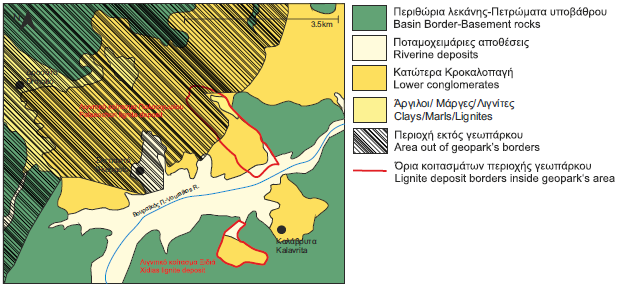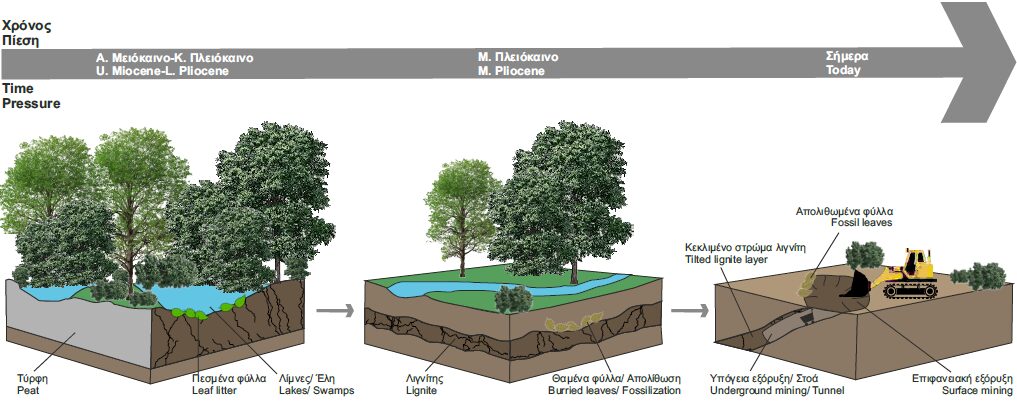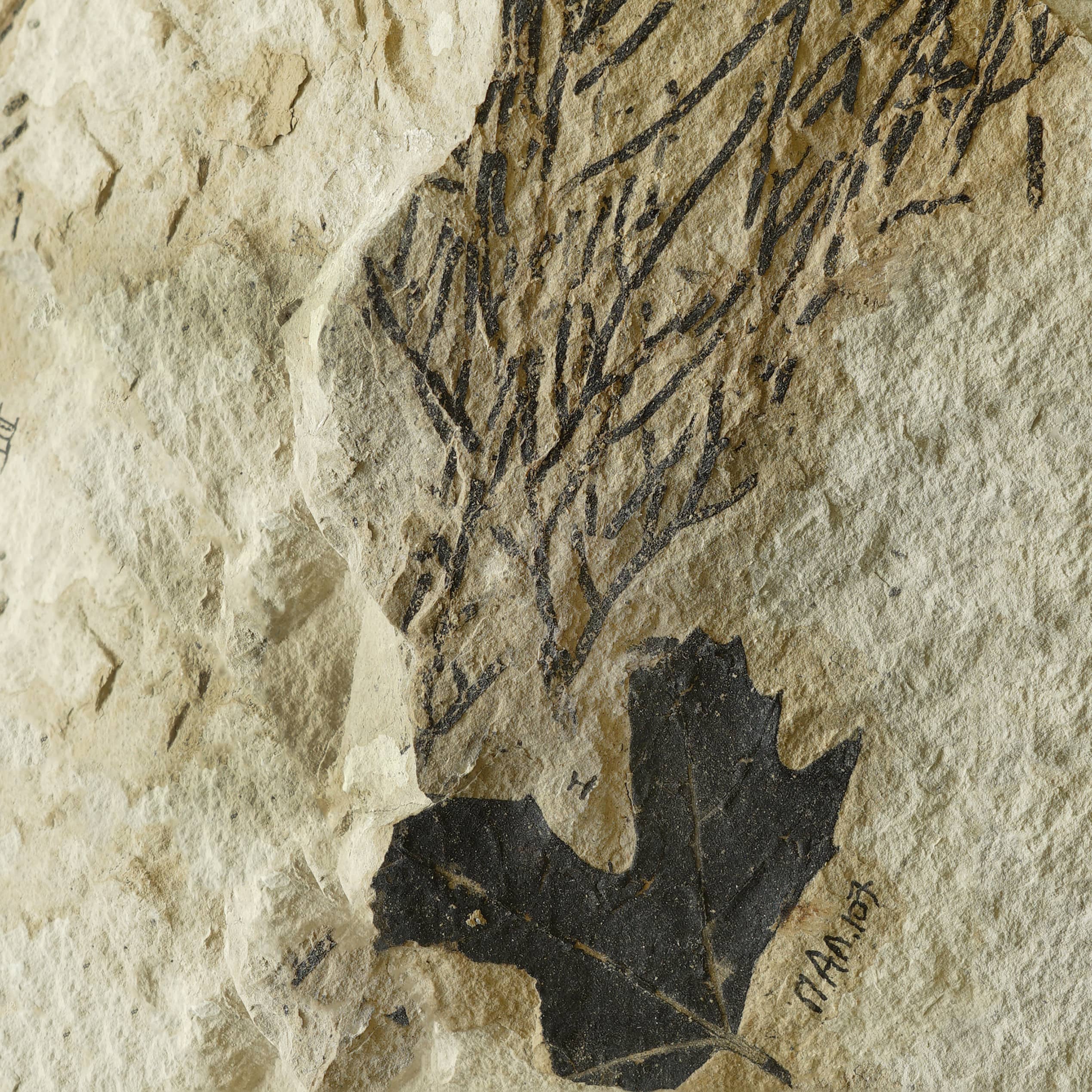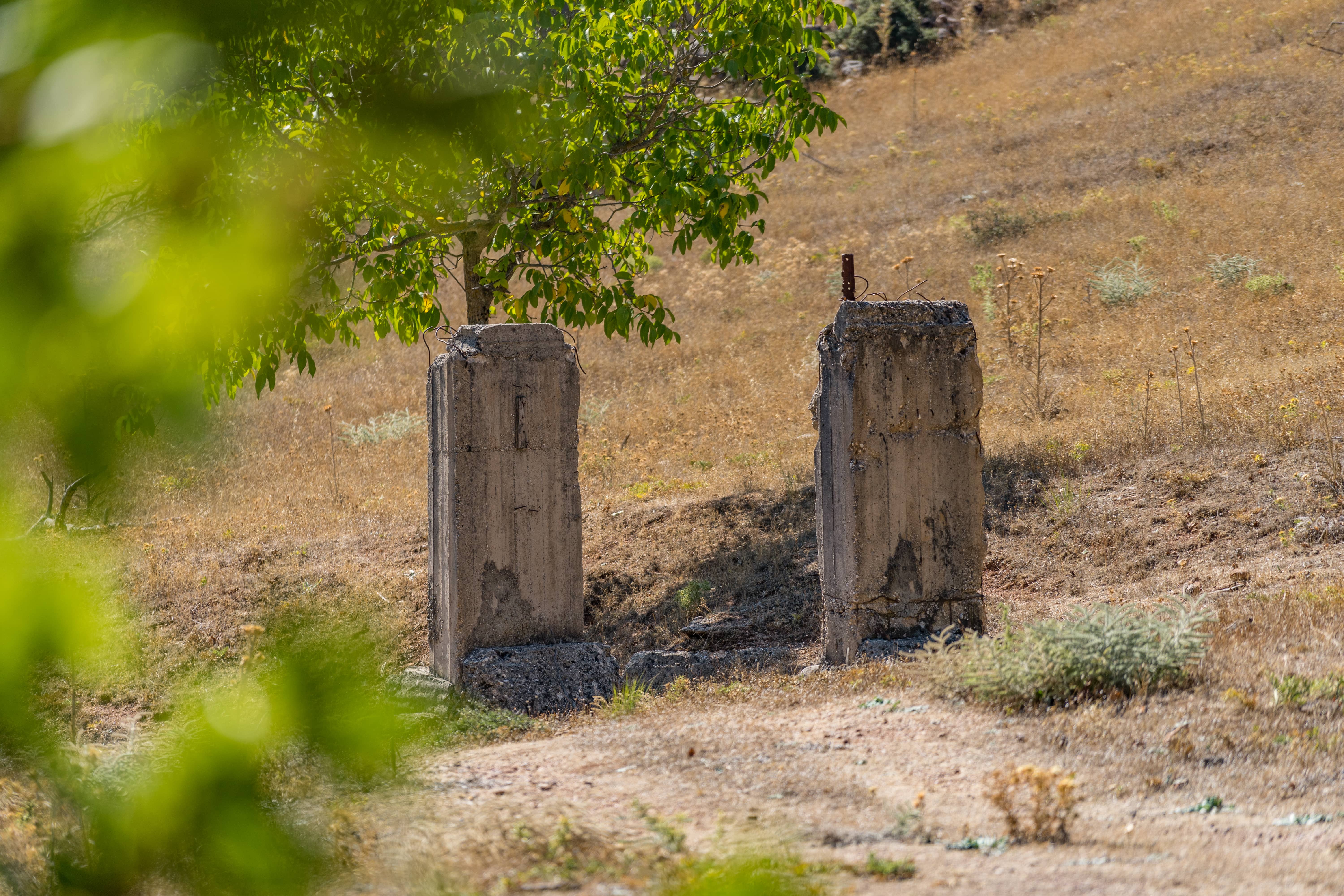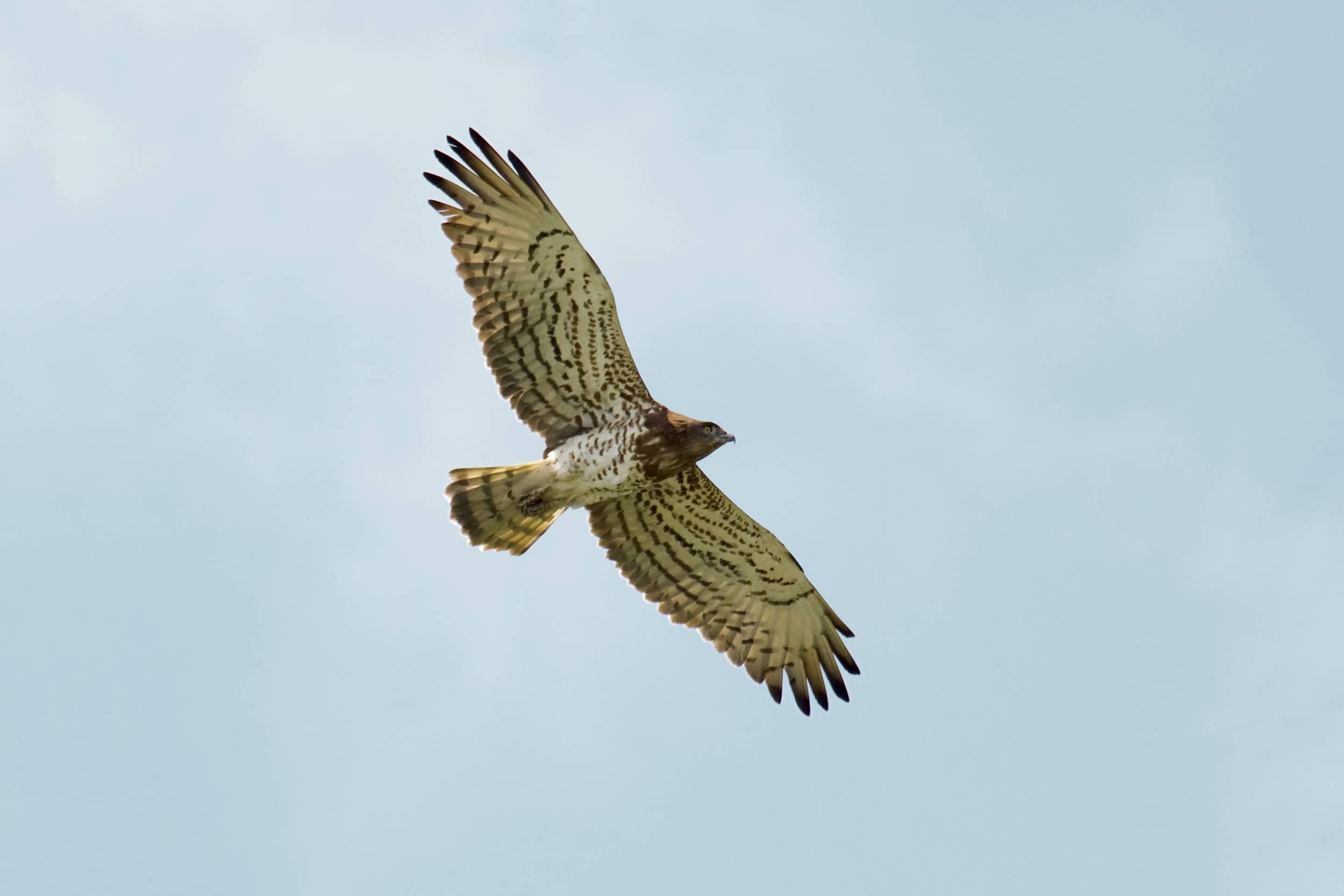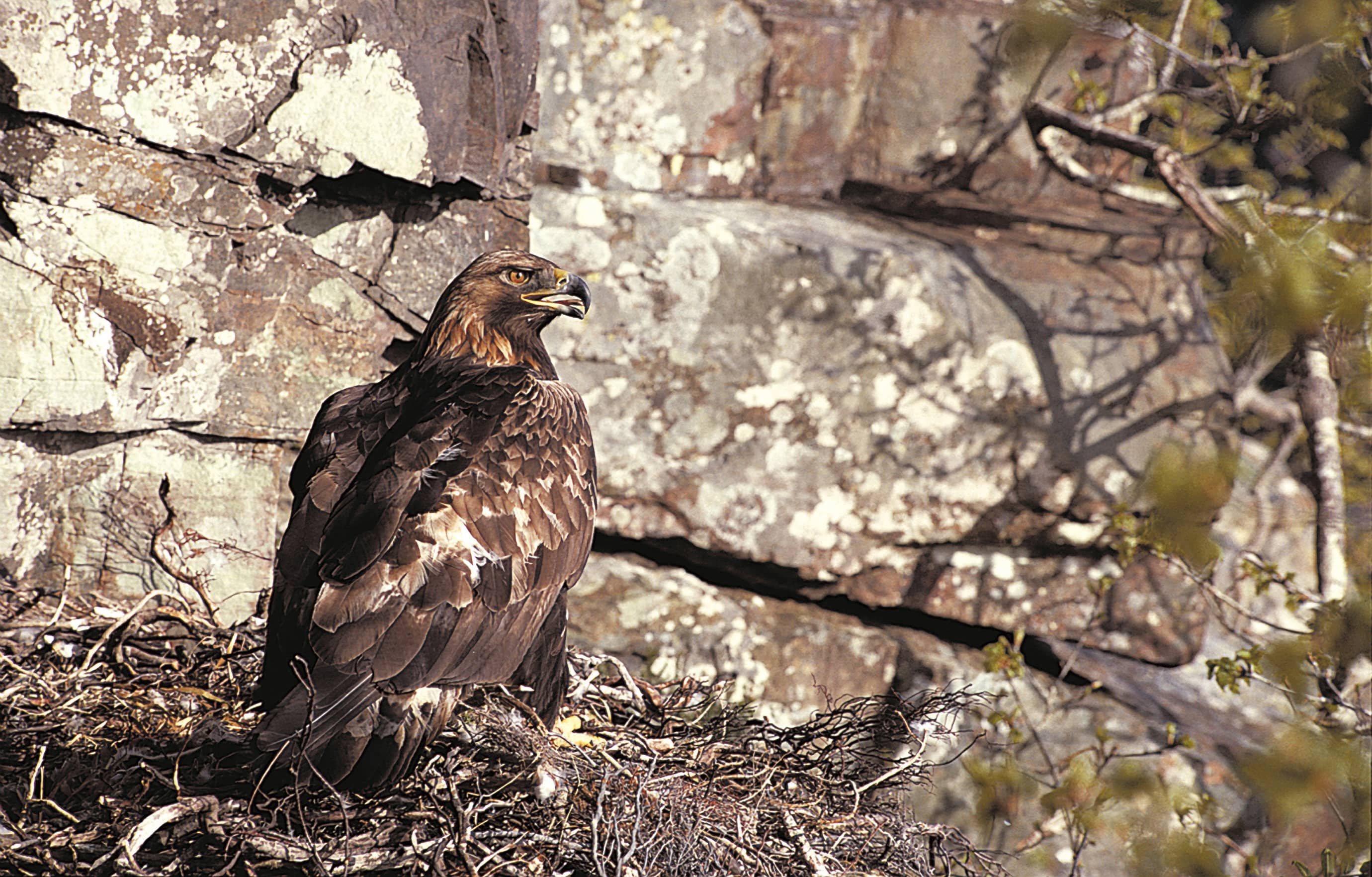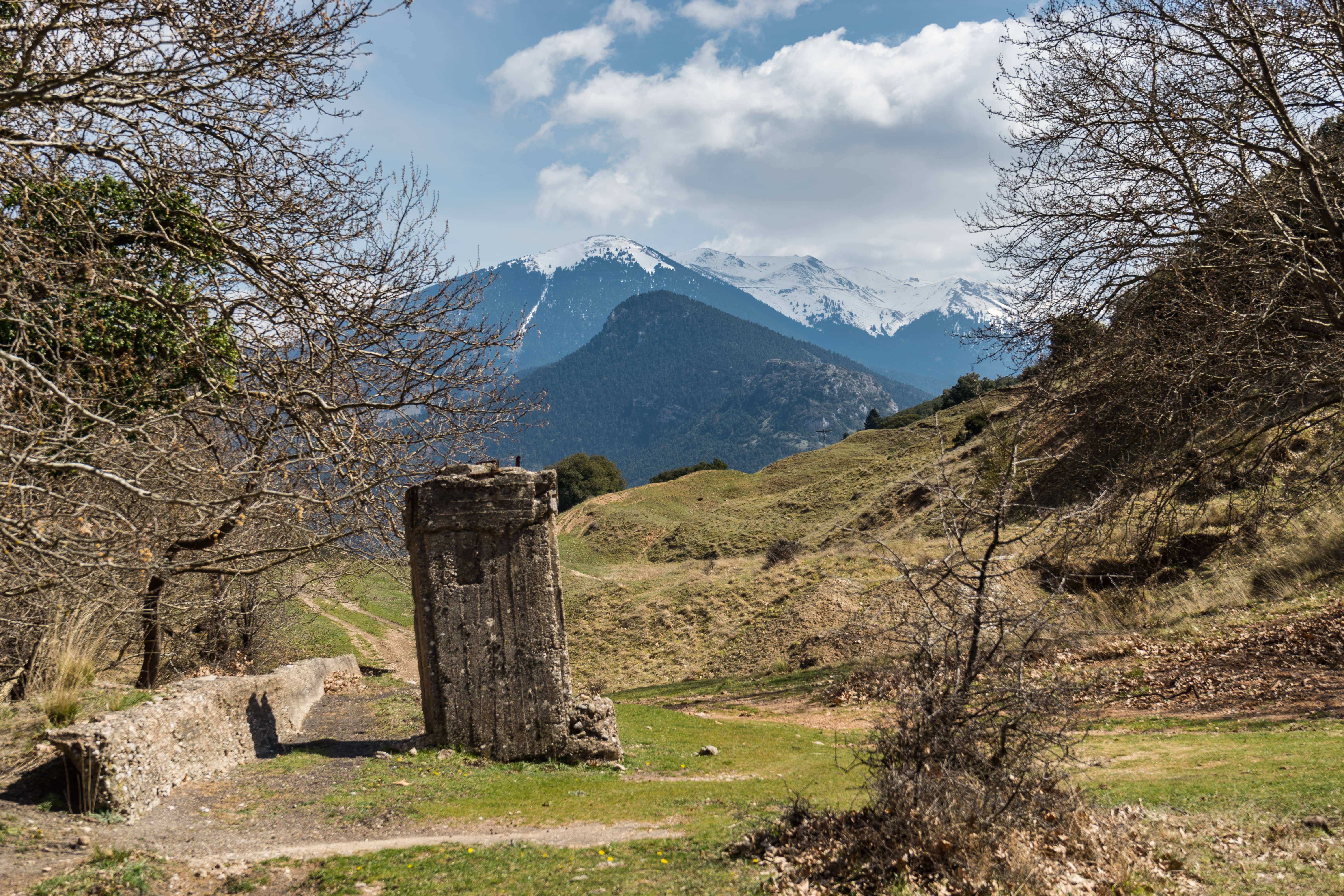A LAKE FROM THE GEOLOGICAL PAST
Kalavryta lignite Basin covers an area of 100 square Kilometers. It is elongated with a maximum length of 21 km. One of the areas where mining activities occurred is Palaeochori. The first attempts for lignite exploitation from the Kalavryta Basin took place during 1918-20. Just before the 2nd World War underground mining started with the opening of small tunnels mostly in Paleochori mine (1933). The mining intensified during the Italian occupation. For many years, the mining of lignite was of great importance for the economy and the life of the people of Kalavryta. Lignite was used in daily life for cooking, heating, etc. In fact, for the residents of the area, lignite was known as “evelos”.
Geodiversity
Five to 1.8 million years ago the topographic relief around the Kalavryta area was intense with several limestone hills. In between these hills, lakes and swamps were formed. They were surrounded by rich forests of gymnosperms, riparian vegetation and flowering plants. This type of vegetation was favored by the cool temperate climate of the Pliocene. The vegetation after its “death” was buried and in combination to the lack of oxygen, peat formed (organic matter partially decomposed). With time and because of the pressure of the overlying lacustrine layers, the lignite layers were formed. In some cases that the organic matter was not enough to form peat the plant leaves were buried in the sediment and in this way they were preserved to form fossils. The intense tectonic regime that existed in the area due to the Corinth Gulf rifting, lead to the uplift and tilting of the lignite layers and their exposure to the surface.
In clays in between the lignite layers rich fossil leave assemblages have been found. Their study revealed that during Upper Miocene-Lower Pliocene, in the area there were swamps with trees, mostly conifers but also many angiosperm plants (flowering plants). Imagine a wonderful forest surrounding the area with pines, laurels, birches, elms, oaks, plane trees and colorful flowering plants consisting of ancestral forms of extant species that have gone extinct long ago. It is noteworthy that scientific research has revealed the presence in the area of a special extinct gymnosperm cypressoid tree: Glyptostrobus europaeus.
Biodiversity
The avifauna of the area is of great interest and includes birds such as the Golden Eagle (Aquila chrysaetos), and the Eurasian eagle-owl (Bubo bubo).

